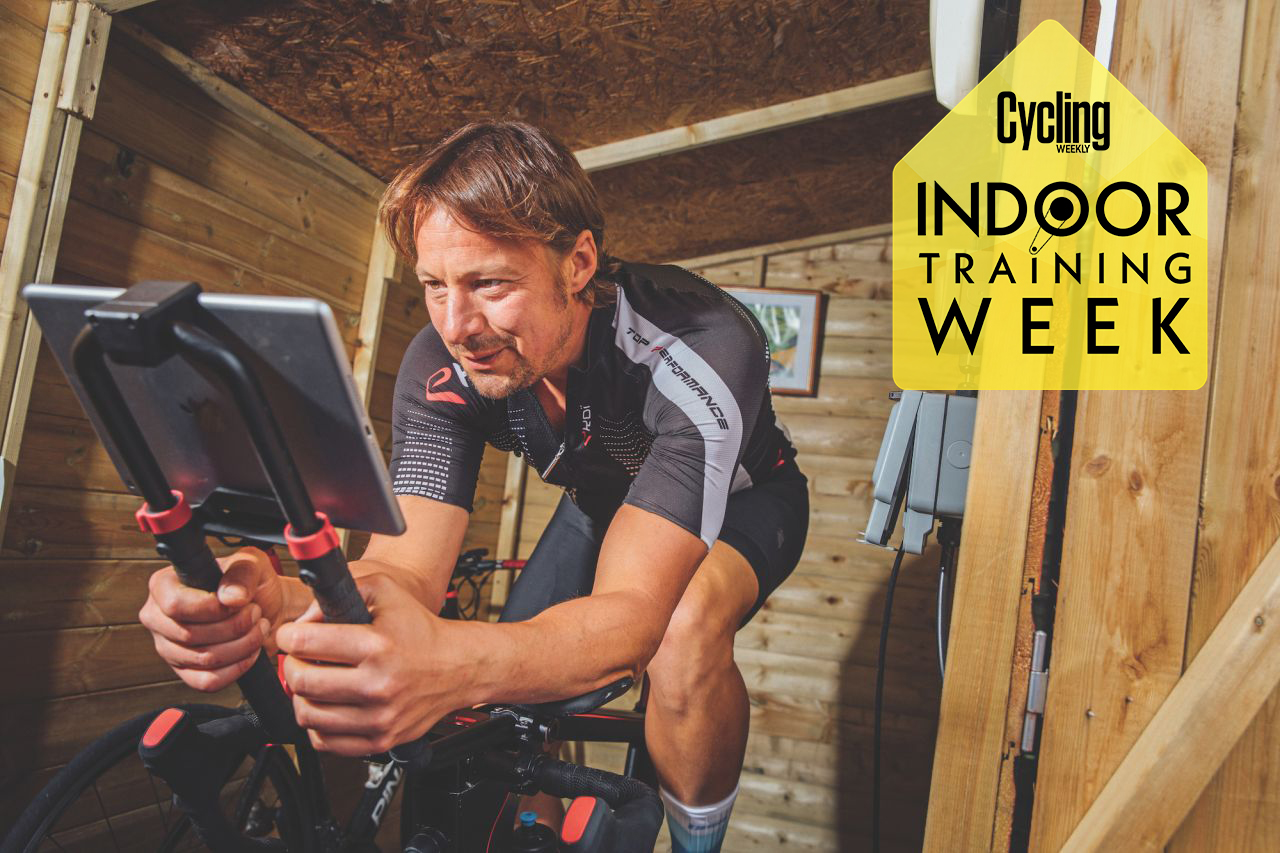
Something unusual happens to the space time continuum during Zwift workouts – it tends to slow down or speed up according to the intensity of the effort. I once did a two-minute Vo2 max interval that took at least an hour to complete, and don’t ask about my last 2x20min threshold session, I must’ve been in the shed for several days. On the contrary, recovery periods get the fast-forward treatment - five minutes of breathing space becomes a fleeting few seconds before it’s back to the coalface for another purgatorial high-end battering.
Yes, Zwift workouts - at least at threshold and beyond - are a test of both mental and physical fortitude. But which session, pre-programmed onto the indoor training app, is the toughest? We took on the three which have garnered the most misery with a view to settling the podium placings once and for all.
How would this be measured? Well, RPE (Rate of Perceived Exertion) is a good start – but there’s an added metric worth looking at here. All workouts are of course demanding of the body, but some require a psychological edge to complete. Therefore, as well as RPE I’m going to add scores for the mental energy needed to complete them - we’ll call it Rate of Perceived Mental Exertion or RPME. Maximum heart rate for each session will also be measured as well as the overall TSS (Training Stress Score, an hour at FTP would elicit a score of 100) that each of these sessions accrued. And finally, on Zwift, each section of any given workout is assigned a star which turns yellow upon successful completion (and staying blank if it isn’t), so I will look how many stars I successfully light up.
My goal when taking on these sessions was to a) complete them by achieving a full complement of stars and b) meet the TSS prescribed to each of them.
It is worth remembering that physiological response to training stress is individual, and based upon a rider's strengths and weaknesses - those who excel at short efforts may find long stints harder, and vice versa - but my assessment should at least give a little insight into the effort required for each session.
The Wringer
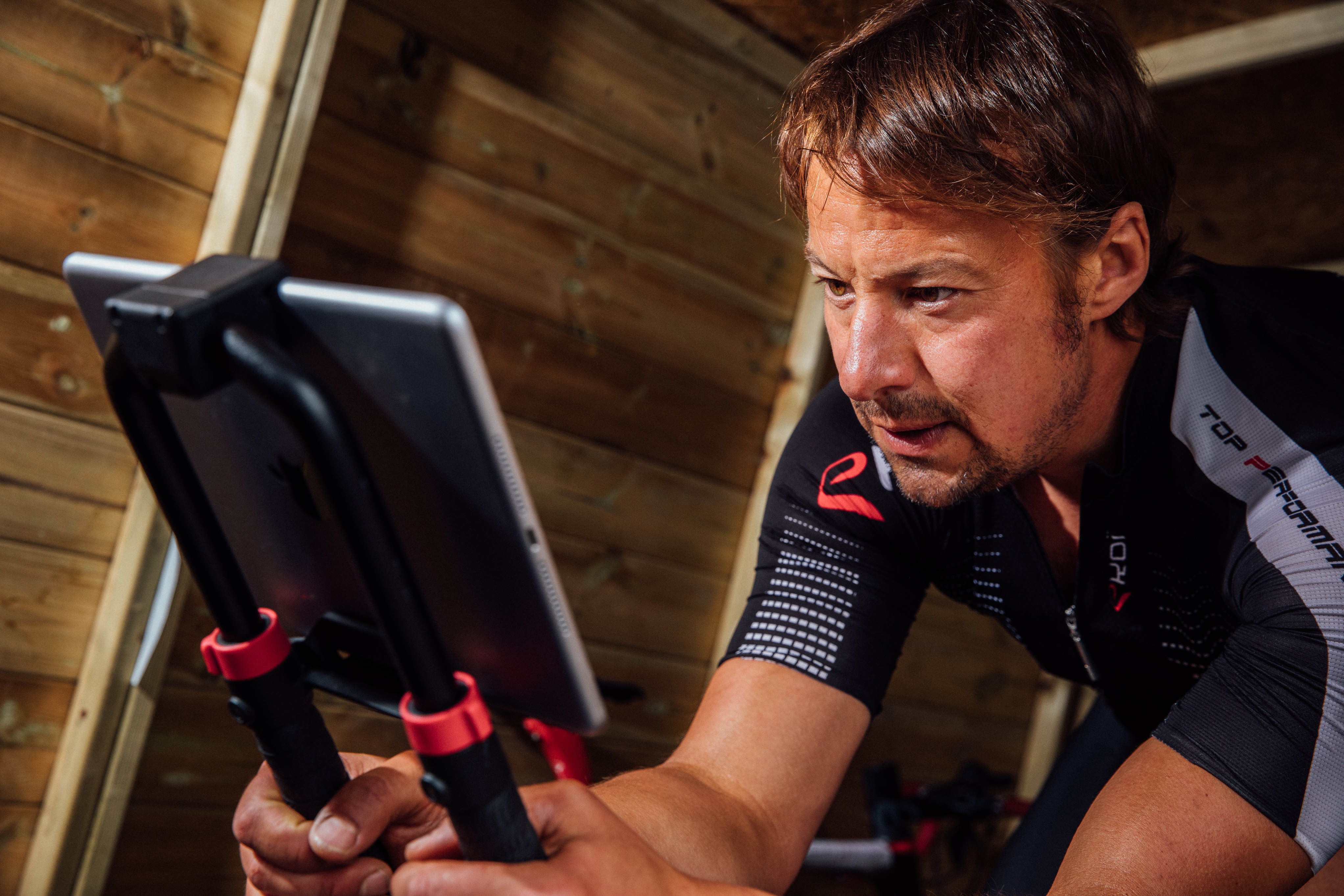
The first workout to sully my screen with its acutely undulating power graph was The Wringer. Pound for pound this should probably be the toughest of the three. Let’s look at the stats: The Wringer is an anaerobic interval session - it is 45 minutes long over which time it yields 87 TSS, a massive training score for such a short session. It comprises a comprehensive warm-up followed by 12x30 sec @ 205% FTP. The rub here – besides the huge power output – is that while the recovery window is originally set at 2.40mins, it decreases by five seconds with every interval. This means that by the time you get to the final 30 second sprint, you’ve only had 1.50mins breathing space – which as we mentioned earlier, moves pretty fast.
My own experience of this workout was an interesting one. The warm up incrementally takes you up to Threshold power then launches straight into the first 30-second effort. It’s a shock to the system – my heart rate during the first interval rising to 165bpm in a very short space of time. With a certain amount of oxygen deficit it takes some seconds for your HR to start reducing but after 2.40mins I was back to around 115bm before starting the second effort.My target power for these intervals was 700 watts. Don’t be fooled – I’m a pretty average cyclist but my 88kg makes it pretty easy to wind up some reasonably sized watts. Plus it’s only 30 seconds – you can close your eyes for the first 20 and spend the remaining 10 hanging for dear life. I soon got into a good rhythm here and actually put out my third best ever 30 second power on the last interval.
Scores on the doors
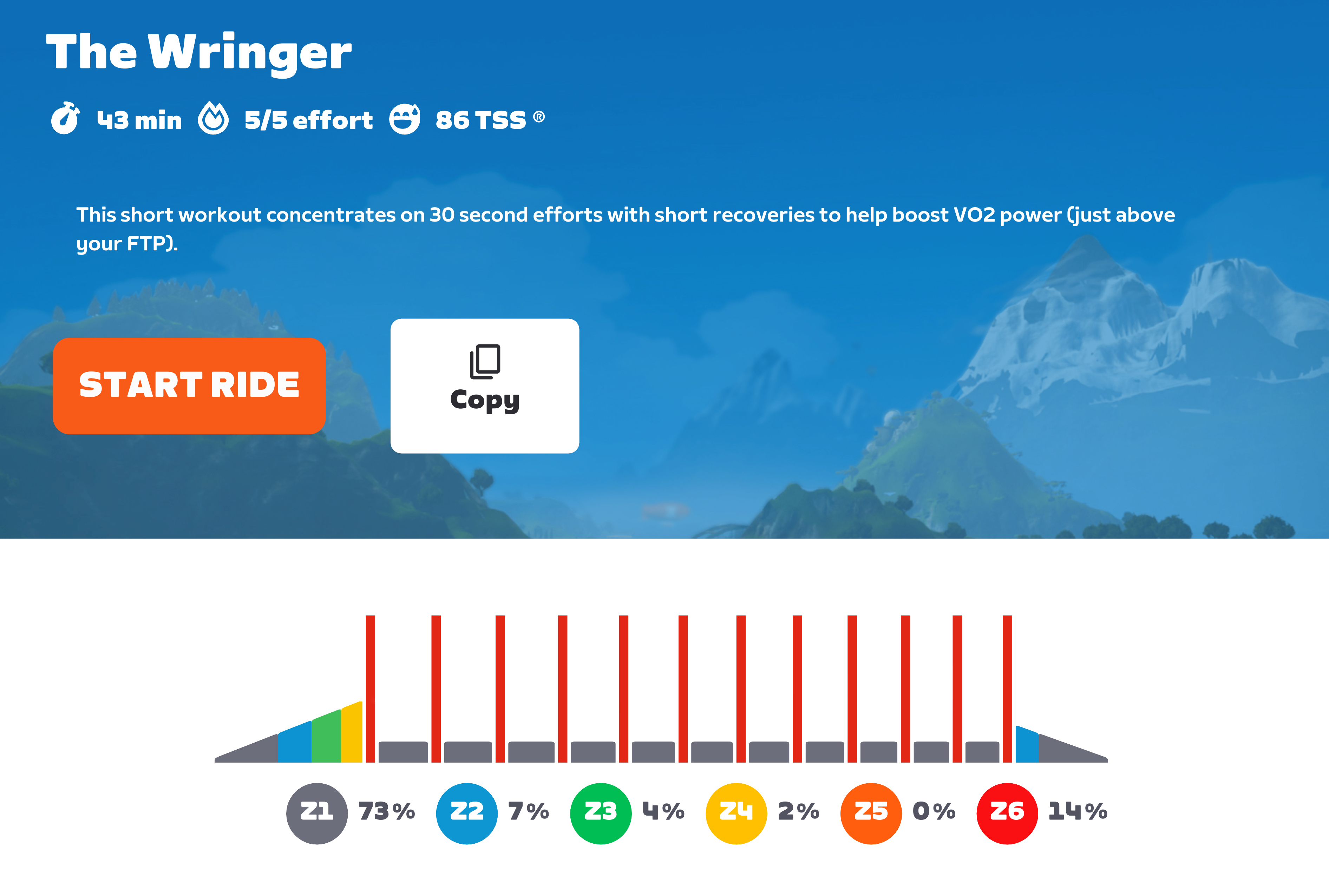
- RPE: 5/5
- RPME: 2/5
- Max HR: 171 bpm
- TSS: 87/87
- Stars: 25/25
The Gorby

Next on the list is The Gorby. An hour-long session which aims to elicit a training stress score of 81, this is a high Threshold/ low Vo2 Max-based workout featuring 5x5 minutes at 110% FTP with 5min recoveries after each effort. Due to the length of intervals, then, this is going to demand psychological and physical strength in equal measure. Five minutes at such an intensity during a racing scenario, while certainly not an easy proposition, mitigates some of the mental element due to extrinsic factors – the desire to win being front and centre here. But when your competition is a painfully slow-ticking clock it’s hard to muster the motivation – the will starts to ebb while pain begins to flow.
The Gorby was ultimately an exercise in damage limitation. WIth 375 watts my target power, I completed the five intervals with the following average power: 1.372w; 2.370w 3.372w 4.363w 5.367w. As you can see these were all paces a little too conservatively – particularly the fourth interval where I had to mine deep for mental strength, with the prior efforts also having already fatigued muscle fibres. I finished the session with the full complement of stars but fell 7 TSS points short. Regardless, I was pretty happy to have completed such a tough session. It has been nicknamed ‘The Quitter’ after all.
Scores on the doors
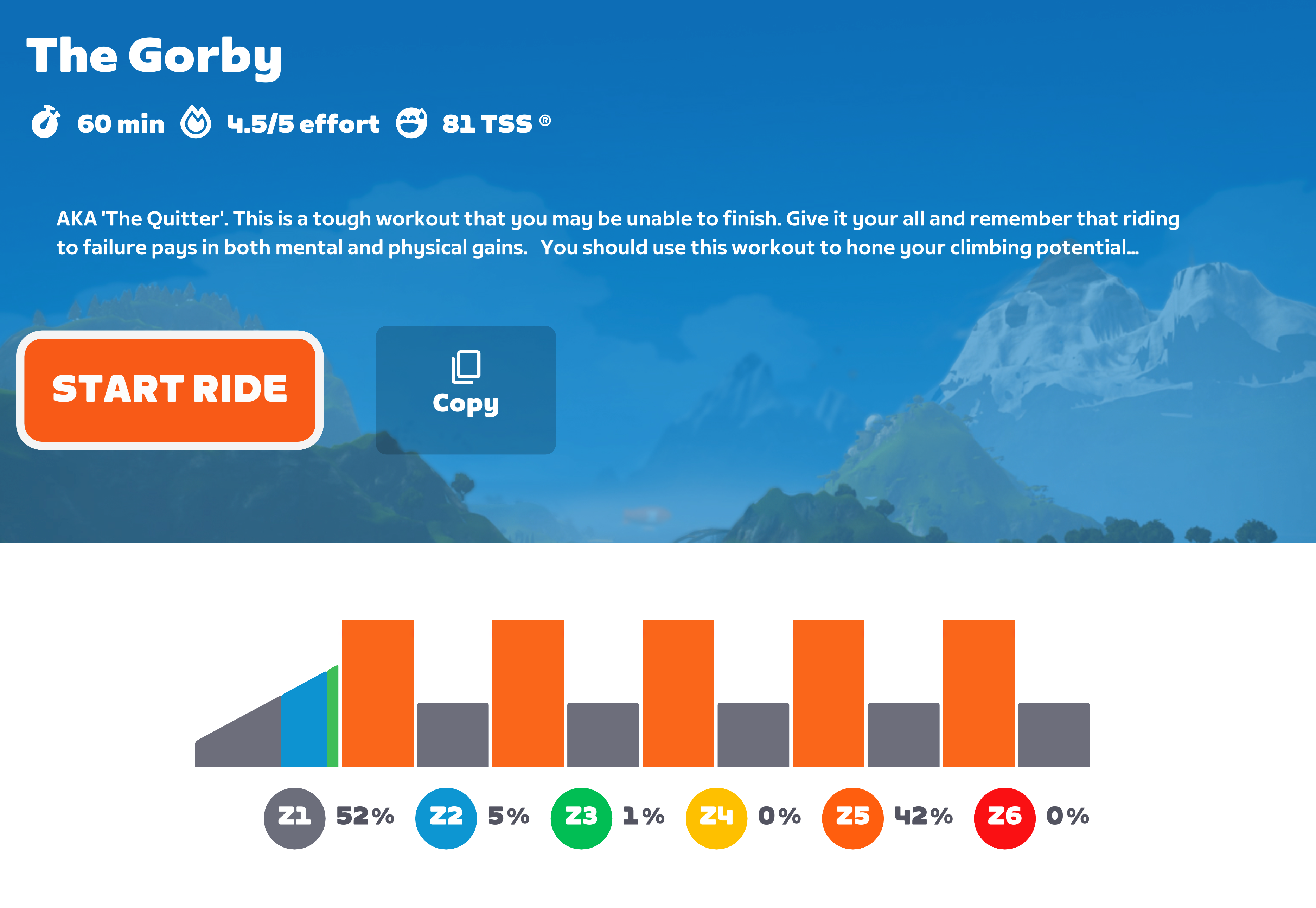
- RPE 4/5
- RPME 5/5
- Max HR: 185
- TSS 74/81
- Stars: 3/3
The McCarthy Special
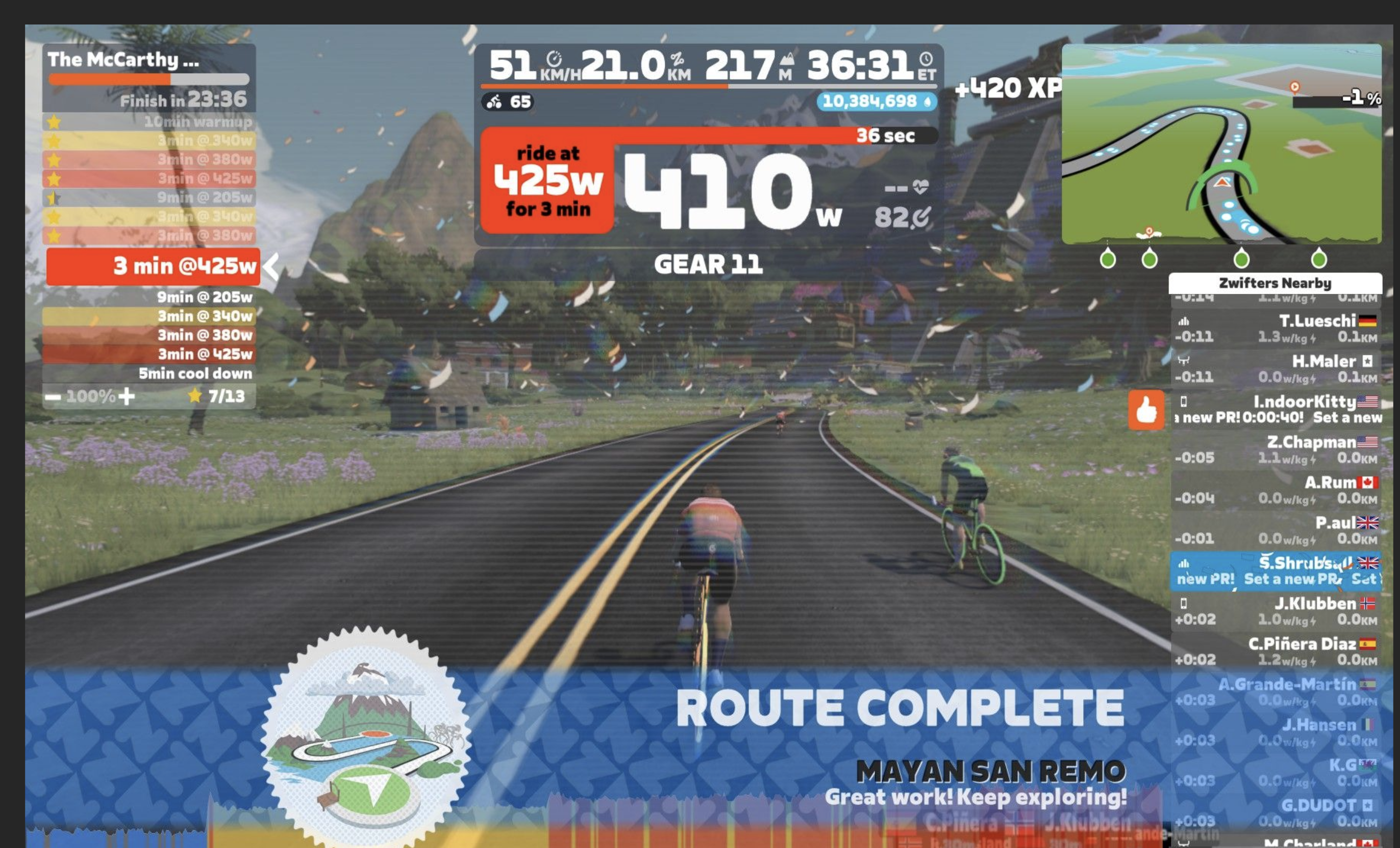
To look at the power targets that the McCarthy Special prescribes is to stare pure evil in the face. It demands a supernatural level of strength, a level that I’ve been unable to meet on the two occasions I’ve tried it before. Let’s break this satanic session down into its frankly terrifying constituents. Designed by American former Worlds Track champ Mike McCarthy (who has said he’d often fail it) - the workout comprises 3x9min intervals which themselves are broken down to 3x3 minutes: the first at 100% FTP, the second at 112% FTP and the third an eye-watering (yes, you will cry) 125% FTP. Each of these are separated by a nine minute rest which gives you enough time to really scrutinise your life choices.
I started the warm up with a clearly outraged hip-hop artiste providing the soundtrack. I needed all the help I could get and aimed to feed off this chap’s anger. But I went in cold - Zwift gives you 10% window either side of your target power, you see. I wouldn’t be troubling anything above it, but it gives you a nice amount of leeway to settle in at a slightly lower wattage and therefore more or a chance of completing the workout with a full set of stars.
The mean average for each nine-minute set was 381 watts – I managed the first at 363w; the second at 366w; and the third at 358w. Unbelievably I’d completed it. However, yes, I’d stuck to some pretty conservative figures, but having recently completed The Gorby and its five minute blocks of hell, I found that because these sets were broken down into three minutes that it was mentally much easier. Physically though, a 189 max heart rate paints a pretty accurate picture. I also fell short of the allotted TSS by 5 points.
Scores on the doors
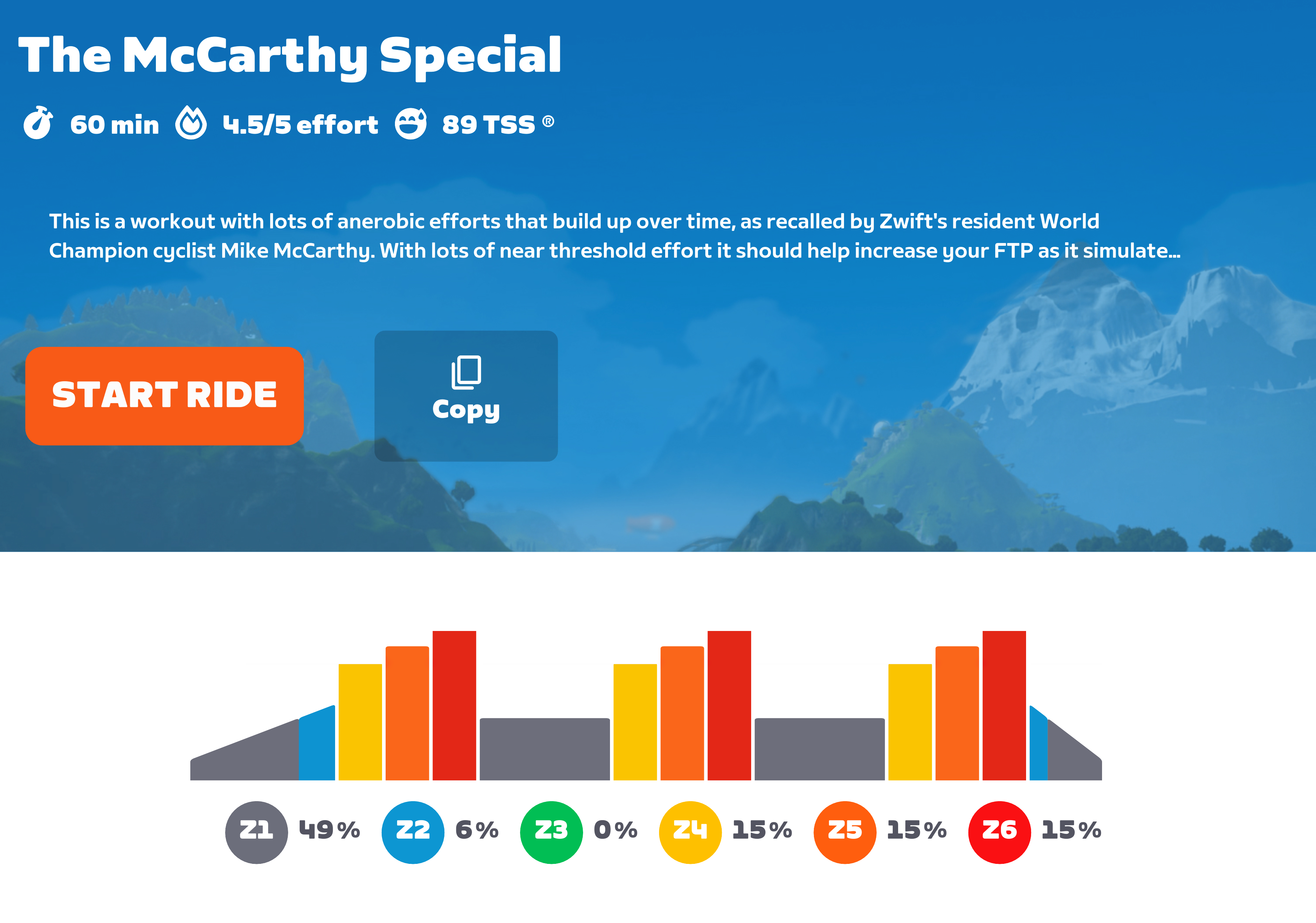
- RPE 5/5
- RPME 4/5
- Max HR: 189bpm
- TSS 84/89
- Stars: 12/13 (apparently I didn’t complete one of the recovery sets!)
The Verdict
I went into this test thinking it would be a clean sweep for the McCarthy Special, but having spoken to the principal product manager at Zwift, Nick Lalkounis, he had hard facts in front of him that suggested otherwise. “Of the three, the general consensus is that The Wringer is that hardest,” he said. I broke down each session into TSS per minute - The Wringer - 2 TSS/Min; The Gorby - 1.4 TSS/Min’ The McCarthy Special - 1.5 TSS per min. I also check the completion rate for all of them and it looks like the McCarthy Special had been completed the most.
Ultimately, this is a case of horses for courses - but due to the mental and physical stresses of The Gorby (AKA ‘The Quitter’) I’m going to award this the title of the toughest workout on Zwift, very closely followed by the McCarthy Special.







